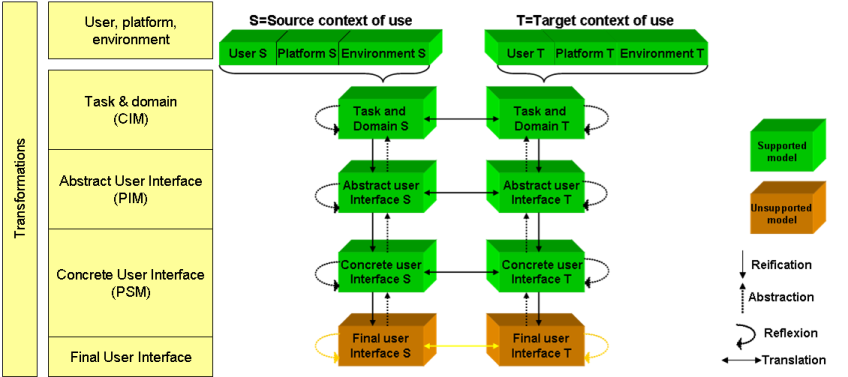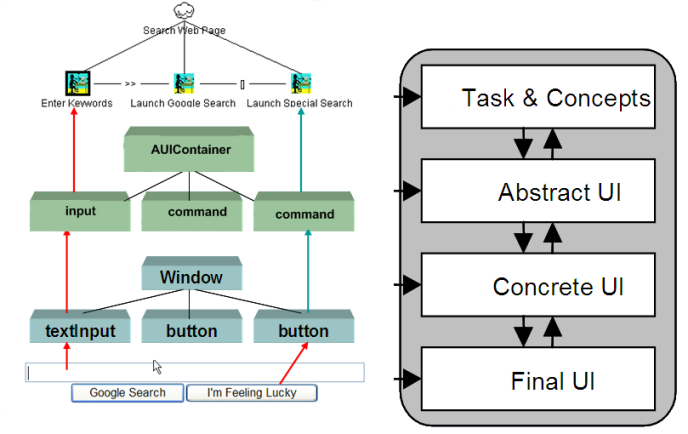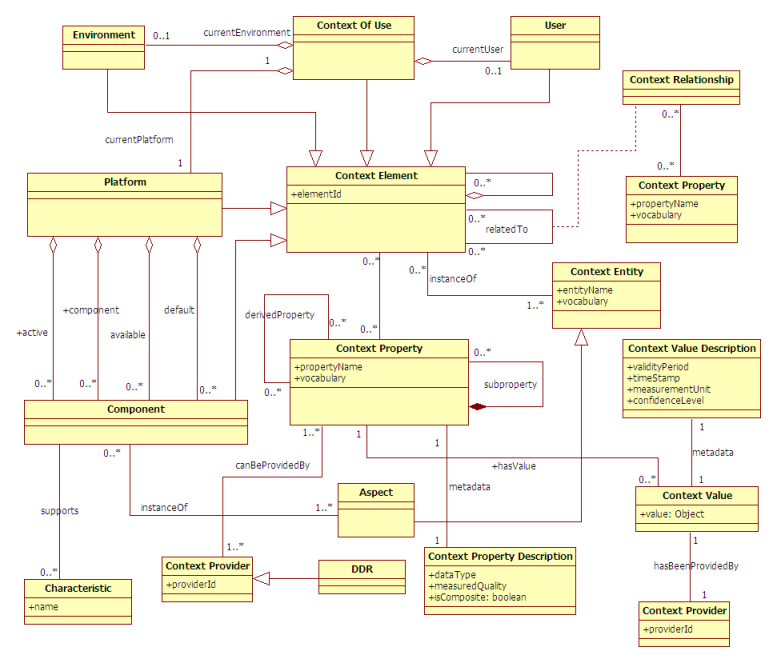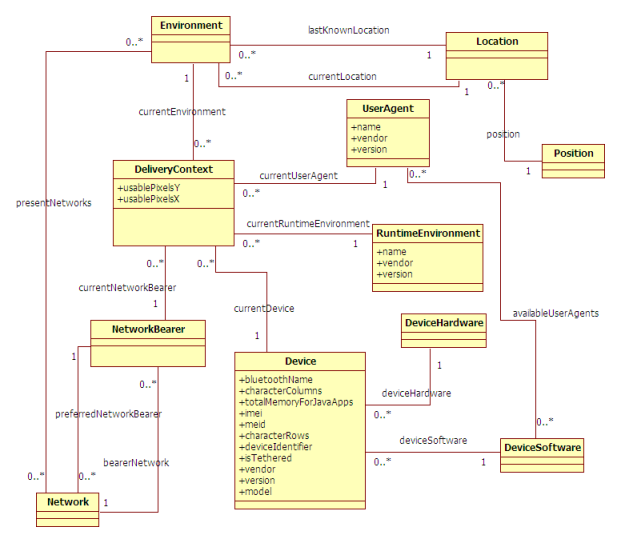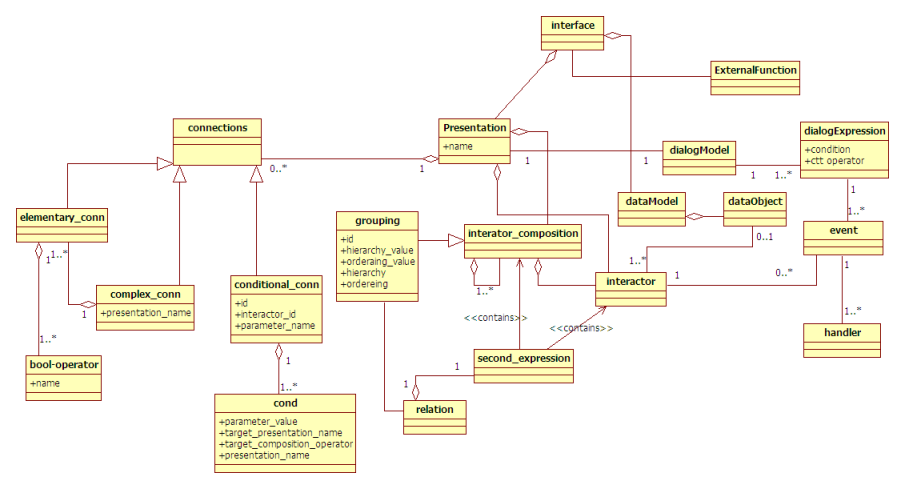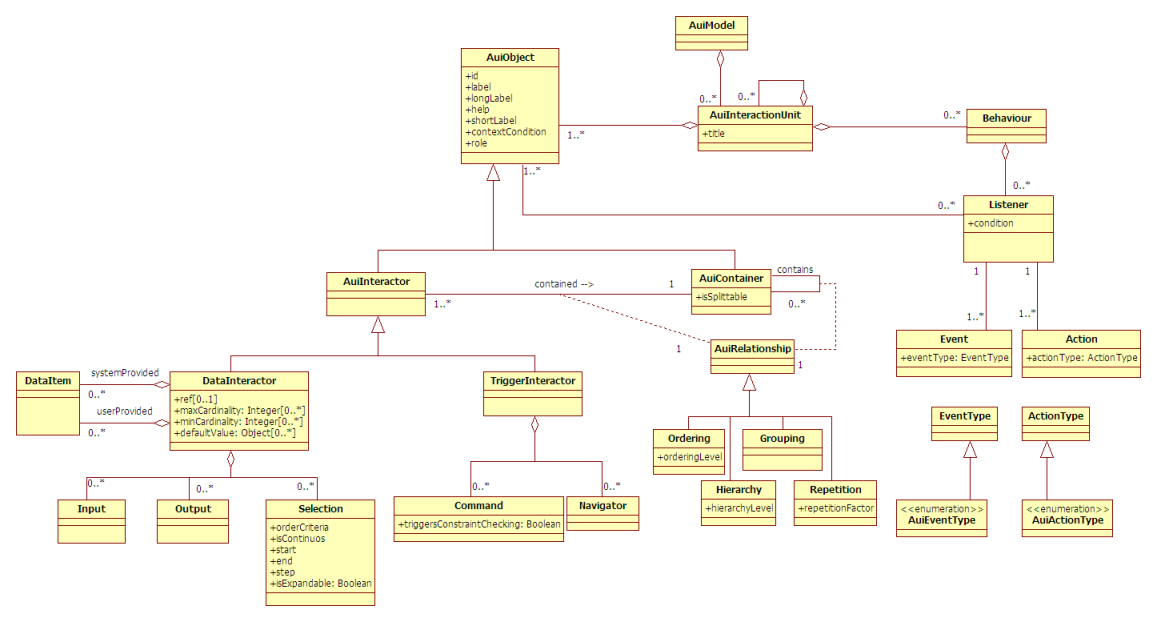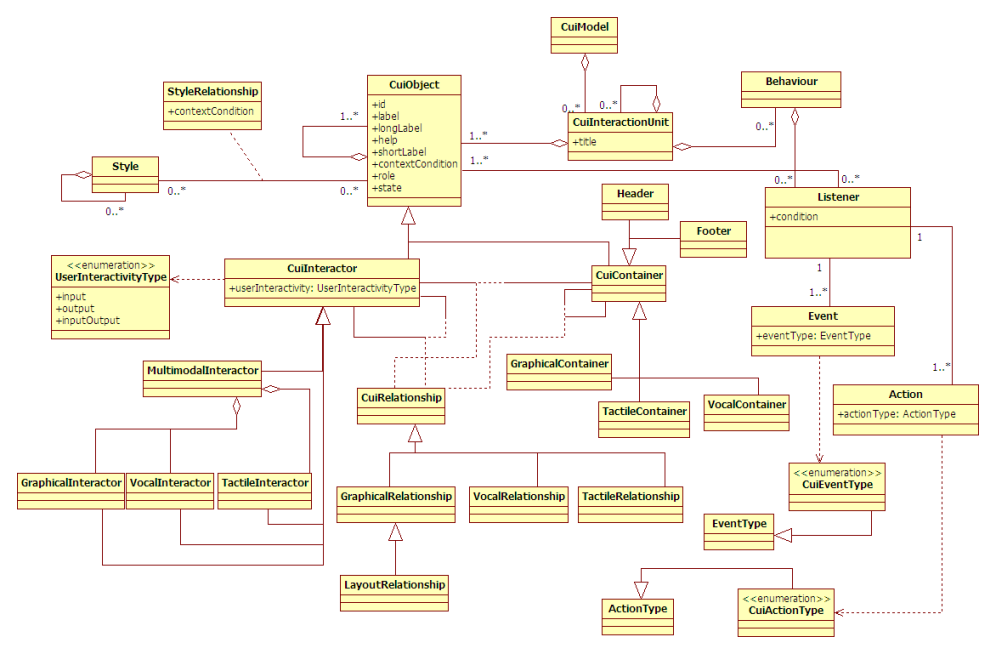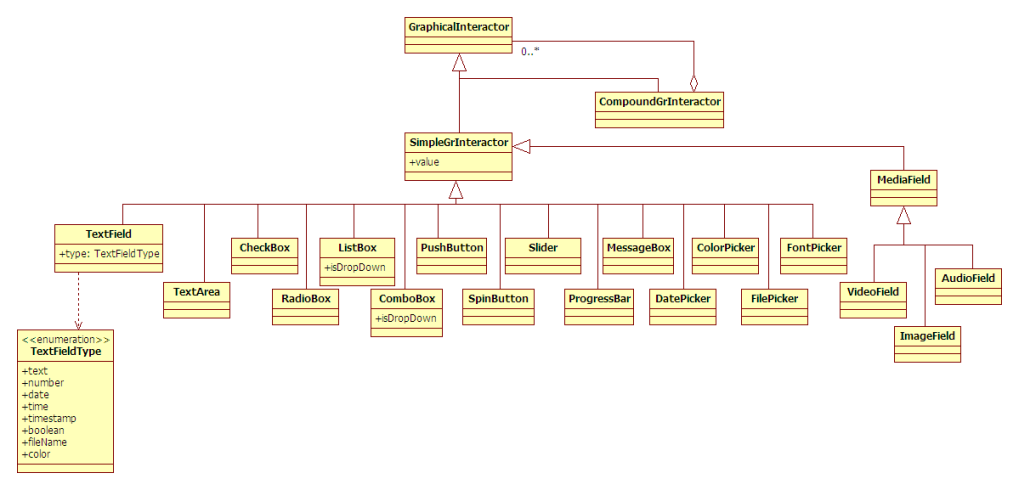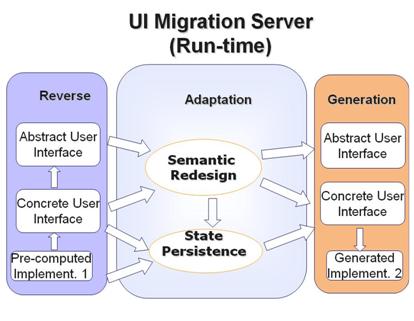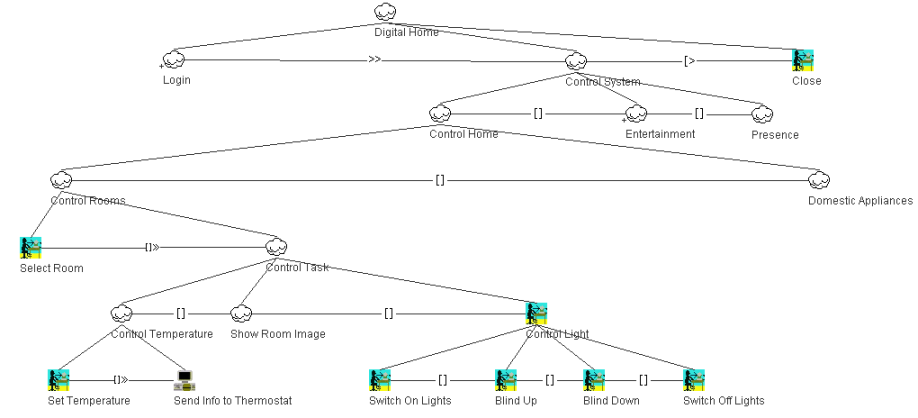2.2.1
The Context of Use
Context is an all-embracing term. Composed of “con”
(with) and “text”, context refers to the meaning that
must be inferred from the adjacent text. As a result, to be
operational, context can only be defined in relation to a purpose,
or finality [CRO02]. In the field of context-aware computing a
definition of Context that has been largely used is provided
by [DEY00]: Context is any information that can be
used to characterize the situation of entities (i.e. whether a
person, place or object) that are considered relevant to the
interaction between a user and an application, including the user
and the application themselves. Context is typically the location,
identity and state of people, groups and computational and physical
objects.
While the above definition is rather general, thus encompassing
many aspects, it is not directly operational. Hence, we hereby
define the Context of Use of an interactive system
as a dynamic, structured information space that includes the
following entities:
- a model of the User, U, (who is intended to
use or is actually using the system)
- the hardware-software Platform, P, (which
includes the set of computing, sensing, communication, and
interaction resources that bind together the physical environment
with the digital world)
- the social and physical Environment, E,
(where the interaction is actually taking place).
Thus, a context of use is a triple composed by (U, P,
E)
The User represents the human being (or a human
stereotype) who is interacting with the system. The characteristics
modelled or relevant can be very dependant on the application
domain. Specific examples are age, level of experience, the
permissions, preferences, tastes, abilities and disabilities, short
term interests, long term interests, etc. In particular,
perceptual, cognitive and action disabilities may be expressed in
order to choose the best modalities for the rendering and
manipulation of the interactive system.
The Platform is modeled in terms of resources, which in
turn, determine the way information is computed, transmitted,
rendered, and manipulated by users. Examples of resources include
memory size, network bandwidth, and input and output interaction
devices. [CCB02] distinguishes between elementary
platforms (e.g. laptop, PDA, mobile phone), which are built
from core resources (e.g. memory, display, processor) and
extension resources (e.g. external displays, sensors,
mice), and clusters, which are built from elementary
platforms. Resources motivate the choice for a set of input and
output modalities and, for each modality, the amount of information
made available. W3C's Delivery Context
Ontology [DCONTOLOGY] is intended to define a concrete
Platform Model.
The Environment denotes the set of objects, persons
and events that are peripheral to the current activity but that may
have an impact on the system and/or users behavior, either now or
in the future
(Coutaz and Rey, 2002). According to our
definition, an environment may encompass the entire world. In
practice, the boundary is set up by domain analysts whose role is
to elicit the entities that are relevant to the case at hand.
Specific examples are: user's location, ambient sound, lighting or
weather conditions, present networks, nearby objects, user's social
networks, level of stress ...
The relationship between a UI and its contexts of use leads to the
following definitions:
- Multi-target (or multi-context) UI
- A multi-target (or multi-context) UI supports multiple types of users,
platforms and environments. Multi-user,
multi-platform and multi-environment UIs are specific classes of multi-target
UIs which are, respectively,
sensitive to user, platform and environment variations. [CCTLBV03]
- Adaptive UI
- An Adaptive UI
refers to a UI capable of being
aware of the context of use and to (automatically) react
to changes of this context in a continuous way (for instance, by
changing the UI presentation,
contents, navigation or even behaviour).
- Adaptable UI
- An Adaptable UI
can be tailored according to a set of predefined options.
Adaptability normally requires an explicit human intervention. We
can find examples of UI
adaptability on those word processors where the set of buttons
contained by toolbars can be customized by end users.
- Plastic UI
- A Plastic UI is a
multi-target UI that
preserves usability across multiple targets. Usability is
not intrinsic to a system. Usability can only be validated against
a set of properties set up in the early phases of the development
process. [CCTLBV03]
